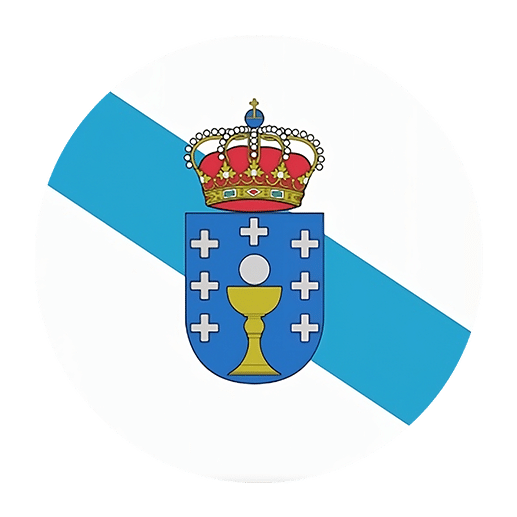Learning a new language can be both an exciting and challenging endeavor. One of the fundamental aspects of mastering any language is understanding how to use articles correctly. In Galician, a language spoken in the northwest region of Spain, articles play a crucial role in sentence structure and meaning. This article aims to provide a comprehensive guide to the use of definite and indefinite articles in Galician, making it easier for English speakers to grasp these essential elements of the language.
The Basics: What are Articles?
Articles are words that define a noun as specific or unspecific. In English, we have the definite article “the” and the indefinite articles “a” and “an.” Similarly, Galician has its own set of definite and indefinite articles, which must agree in gender and number with the nouns they modify.
Definite Articles in Galician
The definite article in Galician is used to refer to a specific noun that is known to both the speaker and the listener. The definite articles in Galician are:
– o (masculine singular)
– a (feminine singular)
– os (masculine plural)
– as (feminine plural)
Here are some examples to illustrate the use of definite articles in Galician:
1. O libro (the book) – masculine singular
2. A casa (the house) – feminine singular
3. Os libros (the books) – masculine plural
4. As casas (the houses) – feminine plural
It’s important to note that the definite article must match the gender and number of the noun it precedes.
Indefinite Articles in Galician
Indefinite articles are used to refer to a nonspecific noun, something that is not known to the listener. The indefinite articles in Galician are:
– un (masculine singular)
– unha (feminine singular)
– uns (masculine plural)
– unhas (feminine plural)
Let’s look at some examples of indefinite articles in use:
1. Un libro (a book) – masculine singular
2. Unha casa (a house) – feminine singular
3. Uns libros (some books) – masculine plural
4. Unhas casas (some houses) – feminine plural
Again, the indefinite article must agree in gender and number with the noun.
Gender and Number Agreement
In Galician, nouns are either masculine or feminine, and articles must agree with the gender and number of the noun they modify. Here are some guidelines to help determine the gender of a noun:
– Nouns ending in -o are usually masculine (e.g., libro – book)
– Nouns ending in -a are usually feminine (e.g., casa – house)
However, there are exceptions to these rules, and some nouns may not follow these patterns. It’s always a good idea to learn the gender of nouns as you encounter them.
Examples of Gender Agreement
1. O gato (the cat) – masculine singular
2. A gata (the female cat) – feminine singular
3. Os gatos (the cats) – masculine plural
4. As gatas (the female cats) – feminine plural
Examples of Number Agreement
1. Un can (a dog) – masculine singular
2. Unha cadela (a female dog) – feminine singular
3. Uns cans (some dogs) – masculine plural
4. Unhas cadelas (some female dogs) – feminine plural
Special Cases
There are some special cases in Galician where the use of articles differs from English. Let’s take a look at a few of these instances:
Days of the Week
In Galician, definite articles are often used with days of the week to indicate a habitual action. For example:
1. Os luns vou ao ximnasio (On Mondays, I go to the gym)
2. As venres imos ao cine (On Fridays, we go to the cinema)
When referring to a specific day, the article is usually omitted:
1. Hoxe é luns (Today is Monday)
2. Mañá será venres (Tomorrow will be Friday)
Names of Countries and Cities
While in English, we do not use articles with most country names, in Galician, definite articles are often used with names of countries and some cities:
1. O Brasil (Brazil)
2. A Arxentina (Argentina)
3. O Cairo (Cairo)
4. A Habana (Havana)
However, some country names do not take an article, especially those that are considered plural in nature:
1. Estados Unidos (United States)
2. Países Baixos (Netherlands)
Possessive Constructions
In Galician, possessive constructions often omit the definite article, especially in colloquial speech:
1. Casa do meu amigo (My friend’s house)
2. Libro da profesora (The teacher’s book)
However, in more formal contexts, the article may still be used:
1. A casa do meu amigo (The house of my friend)
2. O libro da profesora (The book of the teacher)
Practice Makes Perfect
To master the use of definite and indefinite articles in Galician, practice is essential. Here are some exercises to help you get started:
Exercise 1: Fill in the Blanks with Definite Articles
1. ____ gato (the cat)
2. ____ casa (the house)
3. ____ libros (the books)
4. ____ mesas (the tables)
Exercise 2: Fill in the Blanks with Indefinite Articles
1. ____ coche (a car)
2. ____ flor (a flower)
3. ____ amigos (some friends)
4. ____ árbores (some trees)
Exercise 3: Translate the Sentences into Galician
1. The dog is in the garden.
2. A woman is reading a book.
3. Some children are playing in the park.
4. The houses are beautiful.
Conclusion
Understanding and correctly using definite and indefinite articles in Galician is crucial for effective communication. By paying attention to gender and number agreement, special cases, and practicing regularly, you can master the use of articles in Galician. Remember that language learning is a journey, and with patience and perseverance, you will achieve your goals. Happy learning!

